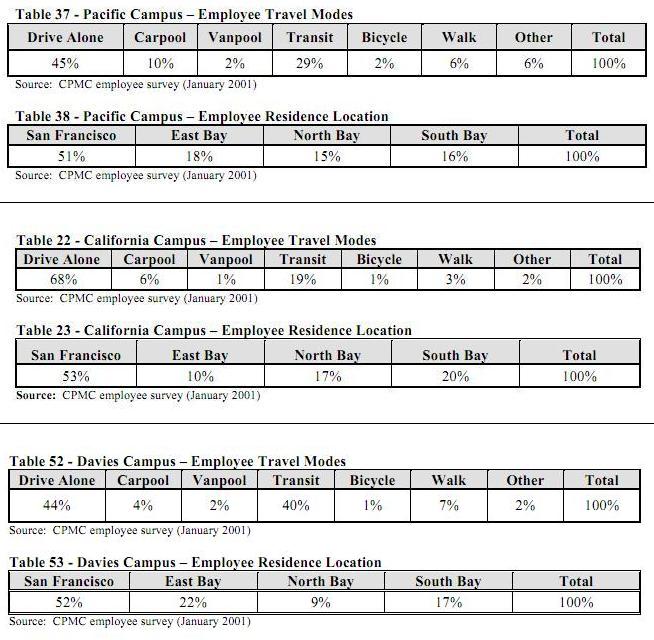Transit Incentives Can’t Make Up for Parking Glut at Cathedral Hill CPMC
3:55 PM PST on December 22, 2011
Nearly 10,000 additional cars [PDF] are predicted to travel every day to the gigantic Cathedral Hill California Pacific Medical Center (CPMC) at Van Ness and Geary after it opens in 2016. While the city is negotiating how much the institution will pay to help mitigate the impacts those cars will have on Muni and pedestrian and bicycle safety, some advocates argue that won't make up for a fundamental flaw: The medical center will include too much parking.
The 555-bed hospital and medical office building will include more than 1,200 parking spaces. CPMC projects half the visitors and employees to come by transit, foot or bike. But based on CPMC's track record at three of its existing sites in the city, Marlayne Morgan of the Cathedral Hill Neighborhood Association doesn't think that's likely.
CPMC's transit incentives for employees aren't enough, says Morgan. “Even with giving $100 to take public transit, they can't get 50 percent of their employees out of their cars," she told the SF Board of Supervisors at a four-hour hearing last week on the transparency of CPMC's negotiations with the city. "There's no way to mitigate the impact of this facility unless you take it down in size."
Cathedral Hill's staff will be comprised largely of current CPMC employees at its other San Francisco locations, just under half of whom live outside the city, according to the transportation analysis in the CPMC's Institutional Master Plan [PDF].
"They're taking three hospitals and putting them in one location," said Morgan. "It's hard to believe that this is going to change the patterns at Cathedral Hill."

CPMC spokesperson Kevin McCormack said employees can get "up to $230 a month in pre-taxed pay to buy commuter checks for use on all Bay Area mass transit from MUNI and BART to Caltrain and van pools," seemingly a reference to federal tax benefits that also provide incentives for employees to drive to work. (In fact, as of January 1, 2012, the maximum monthly pre-tax benefit for parking will be $240, while the maximum benefit for transit will drop back down to $125.)
"We also have shuttles that run between campuses and to and from Muni and BART stations so staff don’t have to bring their cars into the city or into downtown," McCormack added. He couldn't provide information on the parking benefits CPMC offers.
Ultimately, to reduce traffic generated by a specific facility, sustainable transportation advocates say that planners must reduce the amount of parking. "Parking spaces - particularly commuter or visitor spaces - are like magnets for cars," writes Jeffrey Tumlin, a principal at San Francisco-based Nelson/Nygaard Associates, in his upcoming book Sustainable Transportation Planning.
The Cathedral Hill center would be more transit-accessible than the existing CPMC sites. Its location at the intersection of two BRT lines set to open on Van Ness and Geary in 2016 could lure more employees to take transit. But that also makes the high volume of parking all the more superfluous and the traffic generated all the more harmful to transit performance. As Livable City Director Tom Radulovich told Streetsblog last year, "If you’re going to maximize damage to Muni’s network, that’s where you would do it."
While no bicycle improvements have been promised, CPMC could help fund an SFMTA study under the agreement being negotiated with the city. But unless protected bikeways are added to streets like Post, Sutter, and Polk, few commuters are expected to bike to the center.
The San Francisco Bicycle Coalition, which is pushing for a protected bikeway on Polk Street in its Connecting the City campaign, said in a statement that it "is looking to the CPMC Cathedral Hill to really embrace bicycle transportation for its staff and visitors. Supporting the creation of a top-notch bikeway on Polk Street will benefit the hospital, the neighborhood and countless destinations and people throughout the city."
The Cathedral Hill center is set to begin construction next year and open in 2016.
Stay in touch
Sign up for our free newsletter
More from Streetsblog San Francisco
SFMTA Starts West Portal Outreach
Agency presents plans to block traffic from crossing in front of the train station




